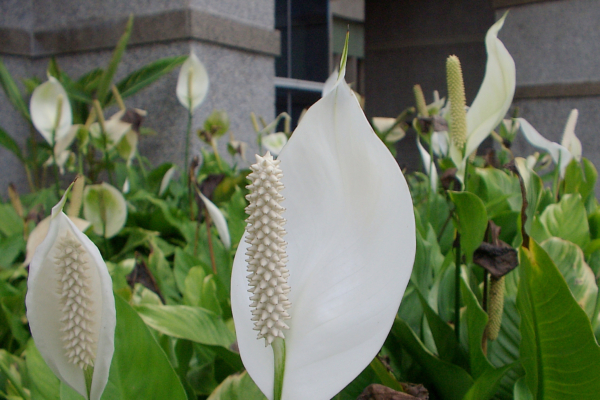White peace lilies are indoor plants that can purify the air and have large leaves with white flowers. If your peace lily hasn’t bloomed for several years, there is a simple method that only takes 20 seconds to potentially solve this issue.
In a Facebook gardening group called “Gardening UK,” a user named Jean Hunter shared how she revived her peace lily that hadn’t flowered for two years.
Jean mentioned that she tried various methods unsuccessfully before someone suggested pruning the leaves, which led to the peace lily blooming again. She quickly spent 20 seconds trimming six or seven leaves, and sure enough, her peace lily eventually bloomed.
Sharing a photo of the blooming peace lily on Facebook, Jean wrote, “If your peace lily isn’t flowering, and you’ve tried all other methods (without success), you should give this a try.”
Another user, Emma Knight, replied that her peace lily hadn’t flowered for many years, but after trying the same method, it produced at least six flowers.
User Sandro also suggested that pruning the newly grown shoots of the peace lily could help it focus more on flowering. New shoots consume most of the energy, so by removing them, the peace lily redirects its energy towards blooming.
According to a report from the British newspaper “Daily Express,” to ensure indoor plants continue to bloom, it is essential to meet their sunlight exposure, watering, and fertilizing needs. In terms of fertilizing, peace lilies do not require excessive nutrients, but they do need proper nourishment for healthy growth.
British plant expert Hannah Rowson recommended using homemade fertilizer like banana peels to supplement the peace lily’s nutrients.
Rowson emphasized that banana peels are excellent homemade fertilizer. As a general practice, you should fertilize every two to three waterings in spring and summer and reduce it to every four waterings in the fall and winter.
However, this schedule may vary based on your plant’s growth. If it grows quickly, a bit more fertilizer may be beneficial.
You can make banana peel fertilizer in various ways, including soaking, boiling, and baking:
First, slice the banana peels and soak them in a container with water sealed for a week, stirring occasionally. This allows the nutrients to release into the water.
When ready to use, mix one part of banana peel water with five parts of regular water and water your peace lily with this mixture. Repeat this process once a week during the flowering season to see your peace lily bloom.
Boil the soaked banana peels in water for 30 to 45 minutes to break down the remaining fibers, increasing the potassium content in the water. Potassium is a crucial nutrient that helps plants bloom. Without enough potassium, your peace lily may not flower.
After washing the banana peels, slow bake in an oven for three hours at a low temperature to avoid burning.
Grind the baked banana peels into powder and store in a sealed container. Sprinkle the powder on the soil or mix it into the soil when fertilizing.
Previously reported by a gardening expert Calum Maddock, using banana peel water to water plants with potassium can seep into the soil, allowing the roots to absorb the dissolved potassium.
He stated, “By using banana peel water, you can reduce your reliance on chemical fertilizers, which also benefits the environment. It’s a sustainable way to provide your plants with care.”
Although banana peel water contains essential nutrients, it may not provide all the necessary nutrients for plant growth. Relying solely on banana peel water for fertilization could lead to poor development, yellowing leaves, and other signs of nutrient deficiency.
To avoid such issues, in addition to banana peel water, consider using other organic products such as compost or fertilizers.

